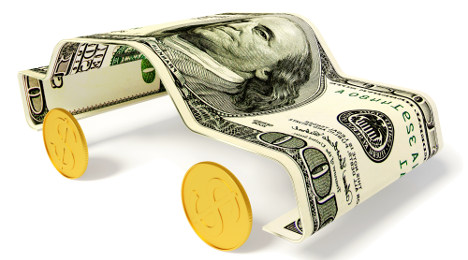This week, Experian Automotive rolled out the newest addition to its suite of portfolio monitoring services the company called Lender Triggers.
Experian highlighted this new tool is designed to help lenders better monitor changes in loan status on their portfolio, including whether a vehicle has been refinanced, a title loan has been added or a vehicle has been paid off.
Experian Automotive senior vice president of marketing Kevin Henahan insisted these actionable insights can enable lenders to make more educated business decisions, evaluate portfolio makeup and perfect titles on their active book of business.
“In today’s automotive lending environment, it’s imperative for finance companies to stay abreast of all changes that could impact their portfolio, whether it’s a change to the vehicle or the consumer status,” Henahan said.
“By adding Lender Triggers to our full suite of portfolio monitoring services, we’re able to provide automotive lenders with the tools and resources to identify changes in their portfolios across the entire life cycle,” he continued.
Lenders using the new triggers product can select the frequency of monitoring. When changes to the portfolio occur, Experian Automotive will notify the client the details of the change and when the change occurred.
Other triggering products in Experian’s suite of portfolio monitoring services include:
• AutoCheck Triggers: a program designed to help professionals identify changes to a vehicle’s history that can impact its value, including reported accidents, title brands and failed emissions, among others.
• Risk Triggers: a notification service that can help financial institutions monitor and minimize the risks associated with high-risk accounts by alerting the company of accounts with new derogatory information, including recent bankruptcy, late payments, liens or judgments, collections or changes in public records.
• Retention Triggers: a daily triggering service that can alert users when their customers are looking for new credit or have opened a new trade. It allows users to take immediate action to retain their most profitable customers.
• Credit Limit, Utilization and Balance Triggers: a value add to the Risk Triggers and Retention Triggers program that can enable users to monitor customers’ credit profiles for changes in credit limit, utilization and credit balance, ultimately allowing the user to improve risk strategies and gain more insight into key contributors that affect a consumer’s credit score.
Auto loan defaults dropped to a new historic low in March, according to the S&P/Experian Consumer Credit Default Indices.
Last month’s data compiled by S&P Dow Jones Indices and Experian showed the auto loan default rate came in at 0.99 percent, dipping below the 1-percent mark for the first time.
A year ago, the auto loan default reading stood at 1.11 percent. In February, the rate was 1.03 percent.
Auto loan performance helped the national composite — a comprehensive measure of changes in consumer credit defaults — to post its lowest post-recession rate at 1.20 percent in March. Analysts from S&P and Experian pointed out that’s the lowest rate since July 2006.
For the second month in a row, all five national indices showed a drop-off.
Beyond the vehicle finance industry, the first mortgage default rate was 1.13 percent in March, its lowest level since September 2006.
The second mortgage sector posted a rate 0.60 percent in March, down from 0.69 percent in February.
Default rates for bank cards also recorded a new historic low in March coming in at 2.73 percent.
“Along with signs that the economy is improving, consumer credit default rates continue to gradually decline,” said David Blitzer, managing director and chairman of the index committee for S&P Dow Jones Indices.
“Across all categories, default rates improved as the auto loan and bank card sectors reached historic lows,” Blitzer continued. “Economic reports confirm these improving trends. Gains were made in consumer confidence and the labor market as a result of fewer applicants filing for unemployment benefits. Retail sales also increased in March with online spending leading the way ahead of the upcoming holiday. Increasing jobs and growing income if upheld will provide a major boost to consumer spending.
“Consumer default rates have stabilized at levels similar to those seen before the financial crisis,” he went on to say.
“Possible areas of concern are reports of increases lending for car purchases to less credit worthy borrowers as well as the continued rise in student loans,” Blitzer added.
Looking at the five largest cities analysts track for this monthly update, each one produced default rate decreases in March.
Analysts indicated Los Angeles’ rate came in at 1.04 percent, the lowest rate for the City of Angels since July 2006.
Dallas posted the largest month-over-month decline as its default rate 19 basis points to settle at 0.97 percent in March.
Miami generated the largest year-over-year decline as the March rate sunk to 2.07 percent, 86 basis points lower than the same month last year.
“Miami continues to maintain the highest default rate while Dallas has the lowest,” Blitzer said. “All five cities — Chicago, Dallas, Los Angeles, Miami and New York — remain below default rates they posted a year ago in March 2013.”
Jointly developed by S&P Indices and Experian, Blitzer reiterated the S&P/Experian Consumer Credit Default Indices are published monthly with the intent to accurately track the default experience of consumer balances in four key loan categories: auto, bankcard, first mortgage lien and second mortgage lien.
The indices are calculated based on data extracted from Experian’s consumer credit database. This database is populated with individual consumer loan and payment data submitted by lenders to Experian every month.
Experian’s base of data contributors includes leading banks and mortgage companies and covers approximately $11 trillion in outstanding loans sourced from 11,500 lenders.
The performance of vehicle installment contracts improved slightly in the fourth quarter, according to results from the American Bankers Association’s Consumer Credit Delinquency Bulletin released today.
As the economy improved and consumers conscientiously managed their finances, analysts found the composite ratio, which tracks delinquencies in eight closed-end installment loan categories, fell 4 basis points to 1.59 percent of all accounts in the fourth quarter, a record low that’s well under the 15-year average of 2.34 percent.
The ABA report defines a delinquency as a late payment that is 30 days or more overdue.
The delinquency rate for direct auto loans — contracts arranged directly through a bank — fell from 0.88 percent to 0.79 percent.
Indirect auto loan delinquencies on contracts arranged through a third party such as a dealer ticked down from 1.64 percent to 1.62 percent.
“As jobs, income and household wealth improve, people have a greater capacity to meet their financial obligations,” ABA chief economist James Chessen said. “Improving consumer finances and closer attention to managing debt are the key factors behind these better numbers.”
Bank card delinquencies saw a slight fourth quarter increase, rising 5 basis points to 2.60 percent of all accounts — but they still remain nearly 32 percent below their 15-year average rate of 3.81 percent.
This movement comes on the heels of ABA’s recent Credit Card Market Monitor, which found that consumers are using credit cards more as a transactional tool to pay for goods and services than as a form of debt.
“The increase in credit card delinquencies was small and not unexpected given how remarkably low the rates are relative to historical standards,” Chessen said. “The fact that consumers are paying off more of their balances even as credit card spending increases shows that people are highly conscious of their debt obligations and actively working to keep them at affordable levels.”
Chessen noted that delinquencies in all three home-related loan categories — property improvement loans, home equity loans and home equity lines of credit — fell in the fourth quarter. This is the first time since the fourth quarter of 2012 that all three home-related loan delinquency rates dropped.
“This across-the–board decline in home-related delinquencies reflects a steadily improving housing market,” Chessen said. “Rising home values are turning the economics back in favor of homeowners. This trend should continue through 2014 and help push delinquencies even lower.”
Chessen is cautiously optimistic about the future, but noted that lingering headwinds may cause these historically low delinquency rates to fluctuate in the months ahead.
“While the economy continues to improve, a cautious and conservative approach to debt is critical,” Chessen said. “Some people are still struggling to meet daily expenses, and a job loss or other economic hiccup can make it difficult for them to pay their bills. Saving emergency funds and creating a financial buffer can help safeguard against unexpected bumps in the road.”
The fourth quarter 2013 composite ratio is made up of the following eight closed-end loans. All of the following figures are seasonally adjusted based upon the number of accounts:
• Personal loan delinquencies rose from 1.51 percent to 1.70 percent.
• Direct auto loan delinquencies fell from 0.88 percent to 0.79 percent.
• Indirect auto loan delinquencies fell from 1.64 percent to 1.62 percent.
• Mobile home delinquencies rose from 3.64 percent to 3.75 percent.
• RV loan delinquencies fell from at 1.14 percent to 1.10 percent.
• Marine loan delinquencies held steady at 1.36 percent (no change).
• Property improvement loan delinquencies fell from 1.25 percent to 1.07 percent.
• Home equity loan delinquencies fell from 3.58 percent to 3.48 percent.
In addition, ABA tracks three open-end loan categories. The fourth-quarter data settled as follows:
• Bank card delinquencies rose from 2.55 percent to 2.60 percent.
• Home equity lines of credit delinquencies fell from 1.71 percent to 1.67 percent.
• Non-card revolving loan delinquencies fell from 1.84 percent to 1.80 percent.
The latest index results from Fitch Ratings showed both prime and subprime annualized losses inched higher in February as asset performance softened somewhat during the past six months.
However, analysts insisted loss rates are still at historically low levels and only marginally off the record low levels recorded in 2012 and 2013.
“Fitch expects losses to improve in March and April as tax refunds provide a temporary uplift to consumer’s cash-flow,” analysts said.
In the prime sector, Fitch indicated 60-day delinquencies were flat in February at 0.39 percent versus January, and 5 percent below the level recorded in February of last year. The firm noted prime annualized net losses ticked up slightly in February month-over-month to 0.49 percent from 0.48 percent in the previous month.
Analysts pointed out February’s annualized net losses rate of 0.49 percent in the prime market was the highest level in two years, and 23 percent above February of last year.
“Despite this, the loss rate last month was within range of mid-2011 levels, and still below 2001 through 2010 levels, which ranged from 0.52 percent to 2.23 percent,” analysts said.
Turning next to the subprime market, Fitch highlighted delinquencies dropped 1 percent month-over-month through February, “a good sign for asset performance in coming months.”
Analysts indicated subprime 60-day delinquencies stood at 3.80 percent in February, down from 3.84 percent recorded in the prior months.
Fitch determined subprime annualized net losses rose 7.5 percent month-over-month to 6.91 percent in February, settling 25 percent higher than a year earlier. Analysts said the reason was “performance softened over the past year.
“Consistent with the prime sector, loss rates are still well within loss rates recorded in the strong 2010 through 2013 period,” they added.
Fitch continued its latest update by mentioning used-vehicle values were relatively flat in February as “both demand and sales of used vehicles received support from bolstered income levels due to tax refunds.”
The Manheim Used Vehicle Value Index stood at 123.3 in February, marking a 1-percent increase over February of 2013.
“The winter weather continues to stunt consumer shopping and auto sales slowed in recent months, but this may change in coming months particularly if manufacturers boost incentives to draw consumers into showrooms,” analysts said.
On the ratings front, Fitch upgraded 18 classes of notes through early March, up from 13 upgrades issued during the same time in 2013. Of these 18 upgrades, 12 were issued on prime auto loan ABS transactions and six on subprime transactions.
“The ratings outlook is positive for 2014, and the sector outlook on asset performance is stable,” analysts said.
A wide array of firms and analysts dissect trends and more about how consumers use their mobile devices to find the vehicle they eventually end up purchasing. The popularity of mobile devices prompted on-demand payment processing technology provider BillingTree to look at how those same individuals could stay engaged through the duration of their financing or lease contract and beyond.
As a result, BillingTree is leveraging its experience in the debt collection space by venturing into auto finance. The company is less than a year into the process, but initial objectives are already being reached.
In late January, BillingTree announced a suite of new solutions that can allow auto finance companies to expand mobile payment options to consumers, and to manage and extend customer relationships beyond their initial purchase through digital marketing promotions and value-added customer service.
BillingTree’s mobile payment and lifecycle management solution can enable customers to view and pay their bills by scanning a QR code from their smartphone and instantly access their account information and payment options. Lifecycle communications features allow auto lenders to automatically identify and execute upsell, cross-sell and promotional marketing opportunities to online and mobile customers based on their buying behavior. Both solutions are supported by BillingTree’s partnership with ZNAP, a mobile payment and business automation platform provider.
“To grow revenues and remain competitive, auto lenders need to keep pace with consumer buying habits and extend their relationship beyond the point of sale,” said Marya Ulis, BillingTree’s auto finance market general manager.
“By offering the convenience of mobile payment and the added value of mobile customer lifecycle management, BillingTree is helping auto finance companies to transform an initial sale as the beginning of an ongoing conversation with customers about their needs,” Ulis continued.
BillingTree’s auto finance solution can allow finance companies to accelerate, streamline and automate payment processing and posting for vehicle loans and leases. It also can enable companies to drive customer loyalty and maximize revenue potential through ongoing digital communications during the entire lifecycle of a consumer’s loan or lease.
Finance companies can use BillingTree to deliver referral incentives, vehicle trade-ins or upsell promotions and other value-added services like extended warranties or service plans.
“This is your opportunity to create a consumer who is a lifetime consumer,” Ulis said. “Every marketing person will tell you it’s a lot cheaper to keep a customer happy and get them to buy from you again versus going out into the marketplace and finding new customers. Our mobile application addresses it head on.”
Ulis noted BillingTree will extend these activities to the mobile channel as well as enable consumers to make their loan payments securely using a mobile device, with the options to configure payment reminders, make partial payments and schedule future payments.
“Auto finance is a perfect example of an industry where mobile technology offers significant value to businesses with the strategic foresight to recognize and seize these opportunities,” said ZNAP North America chief executive officer Greg Gresh. “We are proud that BillingTree has selected ZNAP to expand its proven payment solutions to the mobile marketplace.”
Enhancing Compliance
Because BillingTree has been involved with debt collection companies for more than 10 years, Ulis insisted the auto finance solution can help with compliance, an element that’s intensified with the emergence of the Consumer Financial Protection Bureau.
“Everything we do is always wrapped around this notion of the more you automate, the more compliant you can be,” Ulis said. “The more you move away from a consumer who is writing a check and a physical human being who is processing that or answering a question because there’s automated way to do it, you lose your opportunity to enforce consistent rules for a particular consumer. Anything that is built, whether it’s a mobile application or Web application or phone application, it all allows companies to automatically enforce their business rules consistently. Otherwise, you have to make an exception and that requires interaction with an agent.
“If it’s moving toward a default and repossession, you can prove with automation that you treated them just like everyone else in the same situation,” she went on to say.
“Because we’re done this in the collection agency space, we’ve concentrated on how to do it effectively to go after your consumers you can get to pay because we understand that’s what it’s all about,” Ulis added. “But also how you can do it in the most compliant way so you’re using systems for documentation and more.”
Auto Finance Vital to Company’s Growth
Moving into servicing the vehicle finance industry is just a part of BillingTree’s recent success.
In 2013, BillingTree topped its previous year performance by securing more than 44 percent growth, including new accounts from larger ARM customers while also making inroads into the auto finance market.
The company, which celebrated its 10 year anniversary in 2013, also saw continued growth from additional vertical markets, including healthcare.
In an environment where regulatory compliance was a key concern for many organizations, BillingTree also launched a Compliance Suite, introduced in late November to clarify, simplify and automate the payment compliance process. The suite includes a dynamic knowledge portal containing timely compliance information, offers automated training including best practices and assessments, plus access to leading complaint resolution management systems.
The suite was conceived following the BillingTree 2013 survey of industry operations managers that revealed significant concerns related to compliance, specifically new hurdles brought on by the CFPB and its impact on the market’s growth potential.
“As BillingTree enters its second decade, the company’s vision ‘to simplify the often confusing world of electronic payments’ continues to resonate,” BillingTree president and CEO David Roberts said.
“In a year that saw substantial regulatory enforcement and change, our customer first program and compliance suite initiatives were widely appreciated by customers coping with ever increasing compliance requirements. We’re excited to continue supporting our customers’ growth and challenges in 2014,” he concluded.
The latest update of an ongoing TransUnion study showed consumers continue to place an emphasis on paying their auto loans before their mortgages and credit card payments — and by a wide margin.
TransUnion contends this trend has been in place since at least 2003.
Ezra Becker, co-author of the study and vice president of research and consulting for TransUnion, told SubPrime Auto Finance News this week that trends showing the importance of vehicle installment contracts goes back even further. Becker and TransUnion’s analysts arrived at that assertion while examining some data from 2001.
“Even when home values were skyrocketing, even when unemployment levels were essentially at a point where we were at full employment, auto loans were still the first thing to get paid,” Becker said.
The study was completed using a series of monthly cohorts of anonymous consumer information from December 2002 through December 2012. Each cohort was composed of consumers who had at least one mortgage, auto loan and credit card open and in good standing as of the cohort definition month.
The credit performance of each consumer was evaluated 12 months later using a 30 days past due or worse definition of delinquency — thus the performance data span December 2003 through December 2013. Each monthly sample included approximately 2.5 million consumers.
As a result, TransUnion pegged the auto loan delinquency rate at 0.87 percent with the levels for mortgages (1.71 percent) and credit cards (1.83 percent) coming in twice as high.
Becker explained the reason TransUnion is organizing this ongoing study is “to see if consumers choose to go delinquent on one product over another. When they’re running out of money, what do they choose to pay and not pay?”
He continued: “What’s very interesting to us is conventional wisdom historically has been that if consumers pay one thing and only one thing, it’s going to be their mortgage. But that’s not the case.”
Becker then shared some theories as to why consumers often keep their vehicle financing current while letting mortgage or credit card commitments slide.
“When we try to explain it, it’s merely conjecture but it is easier to sell a car than it is to sell a house. You can list your car on Craigslist and get offers. You don’t have to worry about formal appraisals. You don’t have to worry about a formal closing. It’s a very different process as far as the negotiations for auto loans than it is on a house,” Becker said.
“We’re not saying that people value their cars more than their houses. We’re saying that they paid their auto loans more often than their mortgage notes,” he continued. “It could be that even if you can’t afford the auto loan, it’s easier for you to exit that loan and be whole than it is for you to exit the house and be whole.
“There’s also an element that people use their cars to do a lot, to get to work, to get their kids to school, to buy groceries, to do all sorts of things. Unless you’re in one of those limited parts of the country that have effective public transportation like metro Washington D.C. or downtown Chicago or New York, it is pretty tough to get around without a car. It’s certainly more inconvenient,” Becker went on to say.
Spireon is a part of new alliance aimed at rolling out a solution developed and designed exclusively for credit unions to help them track vehicles in their auto loan portfolios.
Earlier this week, Spireon highlighted a new collaboration between the company’s automotive solutions group, Sprint and CU Solutions Group (CUSG).
CUSG is a leading industry organization offering credit unions nationwide innovative solutions for improving their business operations, efficiencies and member services. CUSG has added Spireon’s LoanPlus CMS (collateral management system) to its arsenal of solutions for credit unions looking to serve a broader range of members with automotive loans while reducing their risk.
Spireon’s LoanPlus CMS is a GPS-based collateral management system that can allow credit unions to capture a wealth of real-time data about their automotive collateral’s location, movement and status, then leverage this data to improve member services, collateral management and collections.
The latest generation of LoanPlus CMS runs on the Sprint 3G nationwide network — and has been recognized as “Best Automotive Collateral Management Platform” in the M2M category during the 2014 Consumer Electronics Show (CES).
Boasting a total subscriber base of more than 1.7 million, Spireon chief marketing officer and executive vice president of products Brad Jarvis emphasized the company brings a proven technology to team with Sprint’s leading telecommunications solutions.
“This cooperative relationship between leaders in three industries — telematics, credit unions and telecommunications — offers unique advantages for credit union customers,” Jarvis said.
“CUSG will now be able to bring their credit union partners powerful, easy-to-use technology for tracking vehicles, managing collateral and reducing risk while extending loans to more members, including those with credit challenges,” he continued.
CUSG chief executive officer Dave Adams also discussed the collaboration.
“With this new affiliation, CUSG can expand our offerings for credit unions to help them grow their auto lending business and better serve their members,” Adams said. “We are excited to bring our credit union members a powerful and proven telematics solution that will help them meet their automotive lending objectives.”
Sprint played a key role in facilitating a new three-way alliance that increases a credit union’s ability to lend in the non-prime auto loan market. LoanPlus CMS is available today from Sprint and Spireon and is available to credit unions exclusively through CU Solutions Group.
“Sprint’s long-standing relationship with credit unions and CUSG has provided tremendous value to credit union members,” Sprint regional vice president Brian Miller said. “This expanded affiliation with CUSG and Spireon builds on our track record of bringing innovative solutions to credit unions across America.”
The 10th generation LoanPlus CMS operates on the Sprint 3G network and is CDMA-enabled. David Meyer, executive vice president of Spireon’s automotive solutions group, explained this technology is geared to ensure that credit unions will remain connected to their automotive data during the term of their loans.
“Now with Sprint and our CDMA-enabled LoanPlus CMS solutions, we bring a whole new dimension of acquiring, servicing and managing the risk of auto loans for CUSG’s credit union partners,” Meyer said.
“This was evident, as we received an overwhelming response during the Credit Union National Association’s Governmental Affairs Conference last month,” he went on to say. “In addition to being able to now serve more of their credit union members, everyone will see a brighter future as the technology this partnership is bringing has future-ready built in.”
To learn more about the CDMA LoanPlus CMS running on the Sprint 3G Network, visit www.cusolutionsgroup.com/LoanPlusCMS.
The other four credit categories included in the S&P/Experian Consumer Credit Default Indices joined auto loans in showing declines in February.
Analysts from S&P Dow Jones Indices and Experian indicated that February data showed the auto loan default rate dipped to 1.03 percent last month, down from 1.11 percent in the previous month. They noted the auto loan level also stood at 1.11 percent in February of last year.
Meanwhile, the national composite reading — a comprehensive measure of changes in consumer credit defaults — declined to 1.30 percent in February, its lowest rate since August 2006.
The first mortgage default rate was 1.23 percent in February, down from 1.26 percent in January.
The second mortgage rate stood at 0.69 percent in February, down from 0.72 percent in January.
Analysts highlighted the bank card rate of 2.83 percent is a new historic low, beating out the previous low of 2.97 percent set in October.
“Despite some mixed economic reports and severe weather, consumer credit default rates continue to decline” said David Blitzer, managing director and chairman of the index committee for S&P Dow Jones Indices.
“Across all categories, default rates improved,” Blitzer continued. “Other data confirms the improving trends. Retail sales revived in February. Purchase of services rose 0.9 percent, the largest jump in over 10 years. And personal income is resilient as incomes rose by 0.3 percent.
“Consumer default rates have stabilized at levels similar to those seen before the financial crisis,” he went on to say.
Looking geographically, analysts noticed four out of the five cities they track for this monthly report saw default rate decreases.
Dallas was the only city to see an increase in default rates as it ticked up to 1.16 percent in February, which was 2 basis points higher than January’s level.
Miami recorded the largest drop to 2.23 percent, a level 38 basis points lower than January’s level.
Los Angeles continued its downward trend, recording a reading of 1.05 percent, the lowest default rate seen since July 2006.
“Miami maintained the highest default rate and Los Angeles had the lowest,” Blitzer said. “Four cities — Chicago, Dallas, Los Angeles and Miami — remain below default rates they posted a year ago, in February 2013.”
However, New York’s default rate ticked up slightly to 1.46 percent, a year-over-year lift of just 5 basis points. The Big Apple’s level in February settled 3 basis points lower than the previous month.
Jointly developed by S&P Indices and Experian, Blitzer reiterated the S&P/Experian Consumer Credit Default Indices are published monthly with the intent to accurately track the default experience of consumer balances in four key loan categories: auto, bankcard, first mortgage lien and second mortgage lien.
The indices are calculated based on data extracted from Experian's consumer credit database. This database is populated with individual consumer loan and payment data submitted by lenders to Experian every month.
Experian’s base of data contributors includes leading banks and mortgage companies and covers approximately $11 trillion in outstanding loans sourced from 11,500 lenders.
According to a new survey by financial information company Sageworks, U.S. banks and credit unions that are preparing for proposed changes to how they must estimate credit losses anticipate they’ll eventually need to boost allowances for loan and lease losses by up to 50 percent
Among more than 300 bankers surveyed during a recent webinar, Sageworks indicated 87 percent said they expect an increase of up to 50 percent to these rainy-day type funds under a credit-loss model proposed by the Financial Accounting Standards Board, the independent body responsible for establishing generally accepted accounting principles.
The company noted only about 11 percent of those surveyed expected no impact to the reserve if the board adopts the leading proposal.
Sageworks analyst Regan Camp explained higher allowances for expected loan and lease losses (called the ALLL) would have pros and cons for financial institutions, business customers, individuals and shareholders.
“The ALLL is probably one of the most, if not the most, important estimates on a bank’s balance sheet, because ensuring you have adequate reserve levels is essential to a bank’s safety and soundness,” Camp said.
“At the same time, as banks reserve more capital for expected losses, they have less available to lend, which means they have less available with which to generate earnings – something shareholders might not like,” he continued.
The expectations among bankers surveyed by Sageworks are consistent with an earlier poll by Sageworks and with previous comments by Comptroller of the Currency Thomas Curry.
Curry in September told a banking conference that implementing the FASB proposal would require most banks to boost allowances, probably around 30 to 50 percent.
Camp pointed out that having less unreserved capital could also tighten credit availability and potentially affect loan terms for businesses and individual customers.
“That’s because financial institutions, which now estimate the upcoming year’s losses on a loan based on a historical review of at least one year of past performance, would have to project losses (and make reserves) based on expected losses for the life of the loan — whether that’s one year, five or 30,” he said.
“From the financial institutions’ perspective, the higher the risk of the loan, the more the reserve’s going to be, and more capital is tied up that I can’t make money from,” Camp went on to say. “The bank’s going to look extra close at that loan when it goes through underwriting.”
Survey participants were volunteers drawn from those attending a webinar hosted by Sageworks on the FASB’s proposed changes.
About half of the webinar participants represented banks and credit unions with assets of less than $500 million, and 36 percent represented institutions with assets topping $1 billion. The remaining 16 percent had total assets between $500 million and $1 billion.
Assuming the current proposal is finalized this year (“and that’s a big ‘if’,” Camp said), financial institutions might have a year or so to implement changes to ALLL calculations, including the ability to gather and compute what Sageworks estimates will be up to 1,000 times more data on loans than they’re currently collecting.
“Many financial institutions are trying to determine how and when to make changes, something that’s particularly challenging for smaller banks and credit unions, which may have fewer resources at the ready and which may be impacted relatively more if big swings in reserves are ultimately required,” Camp said.
Meanwhile, Camp mentioned the OCC has warned banks not to reverse their reserves too quickly and count that income toward earnings, even if loss rates have been declining compared with historical rates as the economy and borrower health have improved.
Instead, Camp said banks are being encouraged to hold onto some unallocated reserves in light of uncertainty in the economy.
“Holding onto reserves might also benefit banks as they grapple with the uncertainty tied to the FASB changes,” Camp said.
“That’s something shareholders can be assessing now,” he added. “Is your bank one that’s recognizing these excess reserves as income when they report earnings, and if so, is that maybe of concern to you? Or are they holding onto these in anticipation of this new requirement?”
From captive finance companies to one-lot buy-here, pay-here dealers, the entire industry is seeing a shift to a ‘new normal,’ which includes smaller down payments, longer terms and negative equity being rolled into a larger financed amount.
While metal is being moved now, trends and buying patterns that might appear three years or more down the road are what industry observers are currently pondering.
“As we shift over to the ‘new normal,’ which is a little bit concerning, right now the belief is the typical consumer goes $400 to $500 on a new car and $300 to $400 on a used car as the monthly payment,” Experian Automotive president John Gray said.
“So how do you get them the most car in that payment structure? As the interest rates have come down, the prices have gone up so you move out the financing,” Gray continued. “The question is still going to come in as interest rates go up in the future, can you put still put a rate out there that puts them in that payment structure? Also, you’re in the car longer so how can you get equity in the car? Is this going to cause the auto industry to think about when people are going to come back into the market?”
Gray’s Experian colleague is considering the same kinds of questions.
Senior director of automotive credit Melinda Zabritski said, “You’ve got extended (loan to value) and loans. Will consumers change their owning patterns?
“For years, consumers would take their car and trade it back in every 36 to 38 months,” Zabritski continued. “It cut back during the recession. But if the consumer still expects to return to market in 3½ years and they’re on a 72- or 84-month loan with a high origination LTV, are they in a position to come back into the market unless LTVs also continue to expand out?”
The latest data from Experian as well as J.D. Power showed these questions aren’t going away any time soon.
According to its latest State of the Automotive Finance Market report, Experian indicated the average amount financed for a new vehicle was $27,430 in Q4 2013, up from $26,691 in Q4 2012. This marked the highest average loan amount for a new vehicle since 2008 and the first time the amount has exceeded $27,000.
Additionally, the average loan amount for a used vehicle during the quarter was $17,974, up $345 from the previous year, which was also a record-high since 2008.
Furthermore, Experian determined new-vehicle interest rates were up to 4.37 percent in Q4 2013 from 4.36 percent in Q4 2012, while used-vehicle interest rates were up to 8.71 percent in Q4 2013 from 8.48 percent in Q4 2012
And the latest analysis from J.D. Power showed long-term loans — classified as loans that are 72 months and longer — accounted for 33.1 percent of new-vehicle retail sales in February, according to data gathered by the Power Information Network (PIN) from J.D. Power.
That pace surpassed the previous record set in September 2012, when 30.6 percent of new-vehicle sales were loans of 72 months or longer.
“Longer loan terms, coupled with the current low interest rate environment, increases the affordability of new vehicles for consumers,” said Thomas King, senior director of PIN at J.D. Power. “This is resulting in strong demand for new vehicles and also record transaction prices.”
King noted that while the increased use of long-term loans has caused concern in the automotive industry about the risks associated with extended purchase cycles, those risks are mitigated by a couple of factors.
First, while 72-month loans are becoming increasingly popular, loans for 24 to 60 months are keeping the average term for new-vehicle loans at 66 months, an increase of only three months since 2009. Second, increased leasing, with typical contract lengths of just 36 months, ensures a healthy supply of future vehicle buyers with shorter purchase cycles.
“Unlike buyers who finance their vehicle and have considerable discretion regarding when to return to market, consumers who lease their vehicle must come back into the market when their lease terminates,” said King. “The current level of leasing means there will be a steady and significant stream of lessees returning to market three years from now.”
J.D. Power also pointed out that while loans of 84 and 96 months are available to consumers, analysts contend such loans have yet to compose any meaningful portion of the auto financing market, with 84-month and longer loans comprising only 3 percent of all sales in February.











